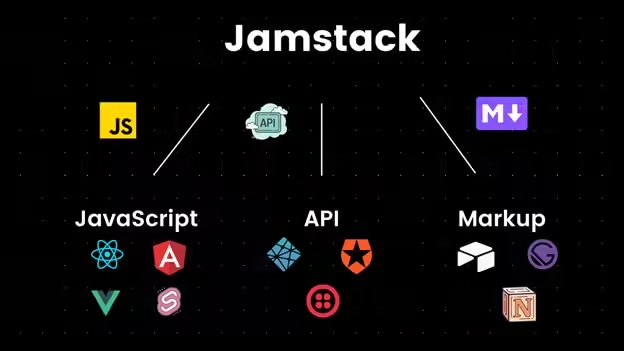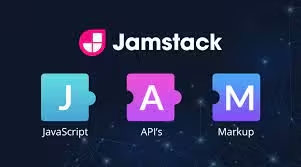In today’s digital landscape, web development is rapidly evolving, with new technologies and frameworks continuously emerging. One of the most significant trends reshaping the web is JAMstack. Standing for JavaScript, APIs, and Markup, JAMstack is a modern web architecture that offers developers a way to create fast, secure, and scalable websites and applications. In this post, we’ll explore why JAMstack is key to modernizing the web and how it can benefit both developers and users alike.

1. Performance
One of the primary advantages of JAMstack is its performance. By serving static files directly from a Content Delivery Network (CDN), JAMstack sites can deliver content to users faster than traditional server-rendered sites. This speed is crucial for user experience; studies have shown that even a one-second delay in load time can lead to a significant decrease in user engagement and conversions.
Additionally, with the ability to pre-render pages at build time, JAMstack ensures that users receive an optimized experience, regardless of their location. This is particularly important for businesses looking to reach a global audience.
2. Security
Security is a top concern for web developers and site owners, especially in an era where data breaches and cyber threats are prevalent. JAMstack offers enhanced security by minimizing the attack surface. With no server or database to manage on the client side, potential vulnerabilities are significantly reduced.
By decoupling the front end from the back end, JAMstack allows developers to use third-party APIs for dynamic functionality, ensuring that sensitive data is handled securely. This architecture means that even if an API is compromised, the static site remains intact, further safeguarding user data.
3. Scalability
Scalability is essential for websites experiencing fluctuating traffic. JAMstack excels in this area by leveraging the power of CDNs. Since static assets can be easily cached and served from locations closer to the user, scaling becomes effortless. When traffic spikes occur, static sites can handle the load without the need for additional infrastructure or server resources.
Moreover, developers can utilize serverless functions to create dynamic experiences without worrying about server management. This flexibility allows teams to focus on development rather than infrastructure maintenance.
4. Developer Experience
JAMstack is designed with developers in mind. By using familiar tools and workflows, such as static site generators, developers can streamline their development processes. The use of version control and build tools also simplifies collaboration, allowing teams to work more efficiently.
Additionally, with a growing ecosystem of JAMstack-focused services and communities, developers can easily find support and resources to enhance their projects. This collaborative environment fosters innovation and encourages the adoption of best practices.
5. Future-Proofing Your Web Presence
As the web continues to evolve, embracing a JAMstack architecture can help future-proof your web presence. With the rise of headless CMS platforms and API-driven development, adopting JAMstack allows you to stay ahead of trends and be ready for emerging technologies.
By building your site on a JAMstack foundation, you position yourself to take advantage of the latest advancements in web development, ensuring that your projects remain relevant and competitive.
Conclusion
In summary, JAMstack is key to modernizing the web due to its emphasis on performance, security, scalability, and developer experience. As more organizations recognize the benefits of this architecture, the demand for JAMstack expertise will continue to grow. By embracing JAMstack, you can enhance your web development strategy and deliver a superior user experience.
Internal Links
For more insights into the latest web development trends, check out other blog posts on Droidmate.
External Links
- JAMstack Official Website
- What is JAMstack? A Beginner's Guide - Smashing Magazine

